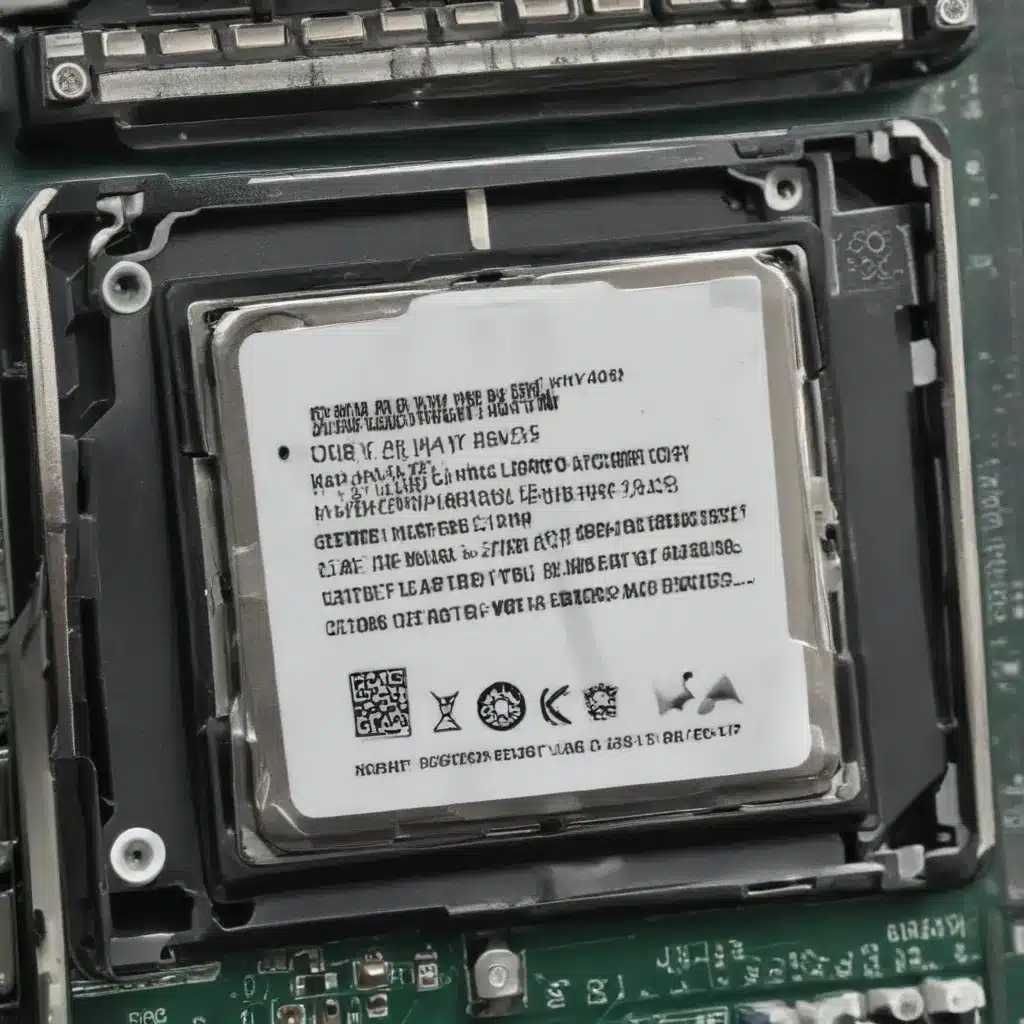
Understanding the Role of the CMOS Battery
The CMOS (Complementary Metal-Oxide-Semiconductor) battery is a small, round battery found on the motherboard of most computers, including laptops. This battery serves a crucial purpose – it powers the CMOS chip, which is responsible for storing the BIOS (Basic Input/Output System) settings and the system clock.
The BIOS is the firmware that initializes and manages the various hardware components of a computer when it is turned on. It is responsible for tasks such as performing the Power-On Self-Test (POST), loading the operating system, and providing a user interface for configuring the computer’s settings. The system clock, on the other hand, is the internal clock that keeps track of the current date and time.
Without a functioning CMOS battery, the BIOS settings and system clock would be lost every time the computer is powered off or unplugged from a power source. This can lead to various issues, such as the computer not booting properly, incorrect time and date displays, and the inability to access BIOS settings.
Symptoms of a Failing CMOS Battery
If you’re experiencing any of the following issues with your laptop, it could be a sign that the CMOS battery needs to be replaced:
-
Incorrect System Clock: When the CMOS battery is weak or depleted, the system clock on your laptop may start to display the wrong time and date, even after setting it correctly.
-
Resetting BIOS Settings: Every time you power off or unplug your laptop, the BIOS settings may revert to their default values, requiring you to manually reconfigure them.
-
Inability to Access BIOS: In some cases, a weak CMOS battery may prevent you from accessing the BIOS menu altogether, making it impossible to modify any system settings.
-
Unexpected Behavior During Boot-up: If the CMOS battery is failing, you may notice strange or inconsistent behavior during the boot-up process, such as the computer not recognizing certain hardware or taking an unusually long time to start.
Replacing the CMOS Battery
If you’ve determined that your laptop’s CMOS battery needs to be replaced, follow these steps to ensure a smooth and successful replacement:
-
Identify the CMOS Battery: The CMOS battery is typically a small, round, coin-cell battery (such as CR2032) located on the motherboard of your laptop. It may be hidden under a cover or tucked away in a corner, so you may need to consult your laptop’s manual or manufacturer’s website to locate it.
-
Power Off and Unplug the Laptop: Before attempting to replace the CMOS battery, make sure to power off your laptop and disconnect the AC adapter. This will prevent any potential electrical shocks or damage to the components.
-
Discharge Static Electricity: To avoid static electricity discharge, which can damage sensitive electronic components, touch a grounded metal surface (such as the laptop’s chassis) before handling the battery.
-
Remove the Old Battery: Carefully remove the old CMOS battery from its socket or clip. Take note of the battery’s orientation and polarity to ensure the replacement is installed correctly.
-
Install the New Battery: Insert the new CMOS battery, ensuring that the positive (+) and negative (-) terminals are aligned correctly. Apply gentle pressure to ensure the battery is securely in place.
-
Reconnect Power and Boot Up: Reconnect the AC adapter and power on your laptop. You may need to enter the BIOS and reconfigure the system settings, such as the date and time, after the replacement.
-
Verify Proper Operation: Once the laptop has booted up, check that the system clock is displaying the correct time and date. Ensure that you can access the BIOS menu and that any previously customized settings are still in place.
Maintaining BIOS Settings and the System Clock
To ensure the longevity of your laptop’s CMOS battery and the stability of your system, consider the following best practices:
-
Regularly Check the BIOS Settings: Make it a habit to periodically review your laptop’s BIOS settings, especially after any major hardware or software changes. This will help you identify any unexpected settings that may have been altered due to a weak CMOS battery.
-
Update the System Clock: Ensure that the system clock is always set to the correct time and date. You can do this manually or configure your laptop to automatically synchronize the clock with an online time server.
-
Avoid Frequent Power Cycling: Minimizing the number of times you power your laptop on and off can help extend the lifespan of the CMOS battery, as it reduces the number of times the battery is required to power the BIOS settings and system clock.
-
Consider Backup Power Options: In some cases, you may want to explore backup power options for your laptop’s CMOS battery, such as using a CMOS battery backup module or a dedicated CMOS battery backup unit. These can help maintain the BIOS settings and system clock even when the primary CMOS battery is depleted.
By understanding the role of the CMOS battery and following these best practices, you can ensure that your laptop’s BIOS settings and system clock remain stable, even in the event of a CMOS battery replacement.
Conclusion
The CMOS battery is a crucial component in your laptop, responsible for maintaining the BIOS settings and system clock. Regular monitoring, timely replacement, and proper maintenance of the CMOS battery can help you avoid a variety of issues, such as incorrect time and date, inability to access BIOS, and unexpected system behavior.
By following the steps outlined in this article, you can successfully replace your laptop’s CMOS battery and keep your system running smoothly. Remember, maintaining the CMOS battery is an important part of overall laptop maintenance and can help extend the lifespan of your device.
For more IT-related tips, solutions, and insights, be sure to visit IT Fix – your go-to source for all things technology.












